Everest Base Camp vs Kilimanjaro: Which Adventure Calls to You?
Choosing between Everest Base Camp vs Kilimanjaro is like picking between two blockbuster adventure movies—each epic in its own right.
Let’s unpack the major differences to help you decide which trek suits you best.
Everest Base Camp or Kilimanjaro: 8 Major Differences
Let’s dive into the nitty-gritty and explore the significant differences between Everest Base Camp and Kilimanjaro so you can make an informed decision for your next big adventure.
1. The Locations
When it comes to Everest Base Camp vs Kilimanjaro, the first thing to consider is their geographical locations.
Everest Base Camp is nestled in the rugged terrains of Nepal, a country known for its rich cultural tapestry and breathtaking Himalayan vistas.
On the other hand, Kilimanjaro calls Tanzania its home, a nation celebrated for its diverse wildlife and stunning landscapes, including the Serengeti National Park and Zanzibar.
Choosing between Nepal and Tanzania isn’t just about the trek; it’s also about the unique experiences each country offers.
In Nepal, you’ll have the chance to immerse yourself in Buddhist culture, visit ancient monasteries, and perhaps even catch a glimpse of the elusive snow leopard if you’re lucky.
Tanzania offers a different but equally enriching experience. You can extend your trip to go on a safari in the Serengeti or relax on the pristine beaches of Zanzibar.
The Takeaway: Think beyond the trails. Consider what cultural and natural experiences you’d like to add to your adventure because both Nepal and Tanzania offer more than just a trek—they offer a journey into diverse worlds.
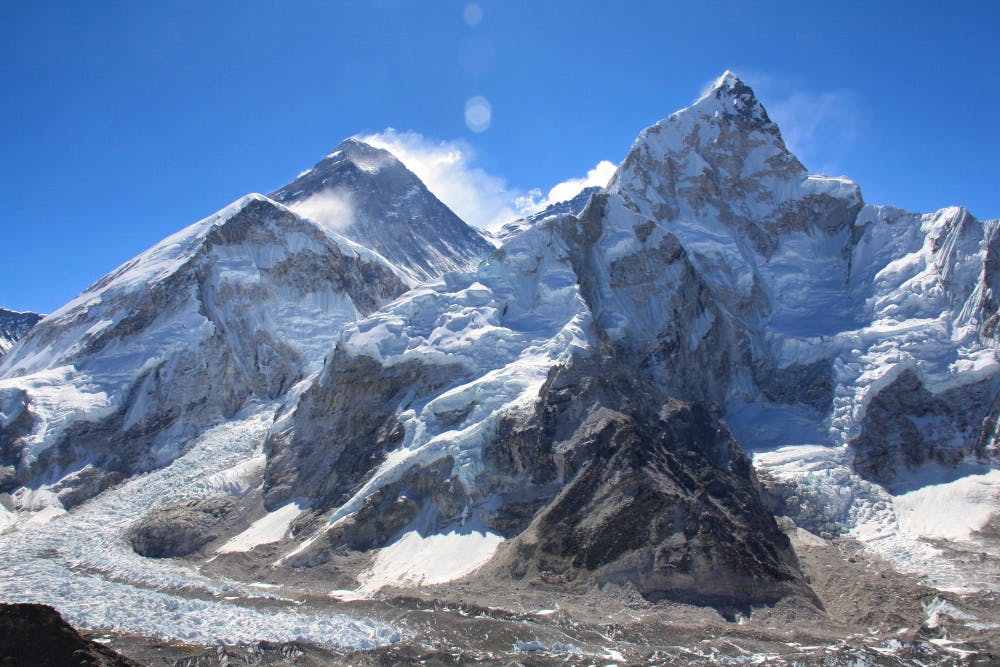
2. Which is harder, Kilimanjaro or Everest Base Camp?
Most people who have done both of these hikes conclude that Kilimanjaro is a tougher trek than EBC. At 5,895m, Uhuru peak is higher than Everest Base Camp (5,364m). The other important consideration is how quickly you reach this altitude. EBC offers more days for acclimatisation while on Kilimanjaro, you ascend much faster which means higher risk of altitude sickness.
Both treks offer their own unique set of hurdles.
Everest Base Camp is a test of endurance. The trek spans over a longer period, allowing you to acclimatise to the high altitudes as you traverse through the Khumbu region of Nepal.
The challenge here lies in the trek’s duration and the ever-changing weather conditions (see how long is the EBC trek and EBC weather conditions).
Kilimanjaro, on the other hand, is a sprint compared to Everest Base Camp’s marathon. The trek is shorter but involves rapid altitude gain, making acclimatisation a key concern.
While Everest Base Camp is more about how long you can keep going, Kilimanjaro is about how quickly you can adapt to changing conditions.
Both treks require a good fitness level, but the challenge type varies. If you enjoy a longer, more immersive experience, Everest Base Camp might be your pick. Kilimanjaro could be your trek if you’re looking for a shorter, more intense challenge.
The Takeaway: Think about what kind of challenge you’re up for. Are you in it for the long haul or looking for a quicker but equally rewarding experience?
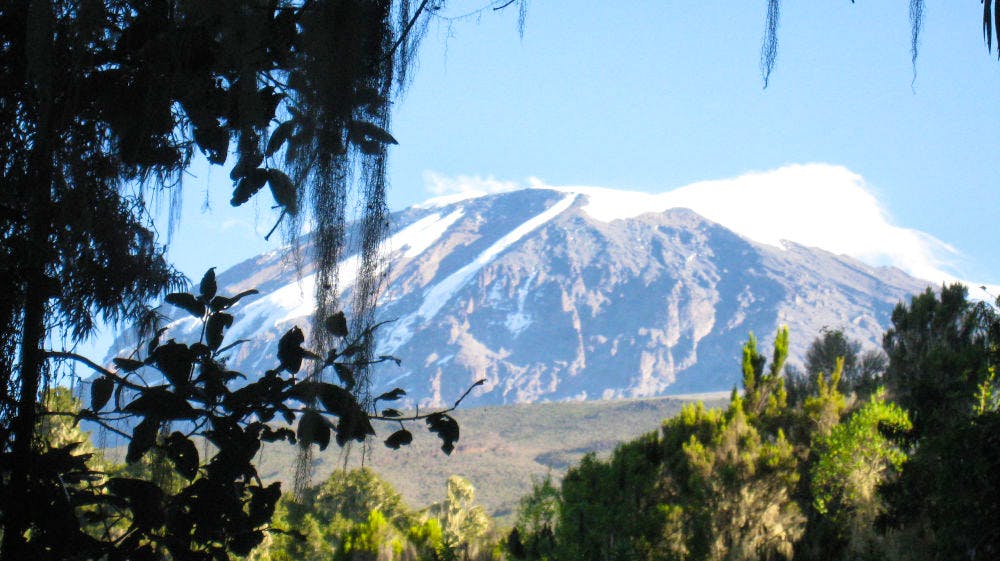
3. Costs Involved
While both treks are investments in once-in-a-lifetime experiences, they come with different price tags.
Climbing Kilimanjaro is generally more expensive than Everest Base Camp. The costs to climb Kilimanjaro can range from $2,000 to $4,000, depending on the route and the level of luxury you opt for.
The cost to hike to EBC on the other hand, is more budget-friendly. You can expect to spend around $1,000 to $2,000 for the trek, excluding international flights.
Although Kilimanjaro is shorter in duration, it is more expensive as it requires an expensive park permit (around $1000 for a 7 day trek), and a bigger support crew.
But remember, the cost isn’t just about the trek itself—factor in additional expenses like gear, travel insurance, and flights to and from the starting points.
Also, consider the value-added experiences each trek offers—whether it’s the cultural richness of Nepal or the natural wonders of Tanzania.
The Takeaway: Think about what you’re getting for your investment. Both treks offer priceless experiences, but your budget might tip the scales in favour of one over the other.
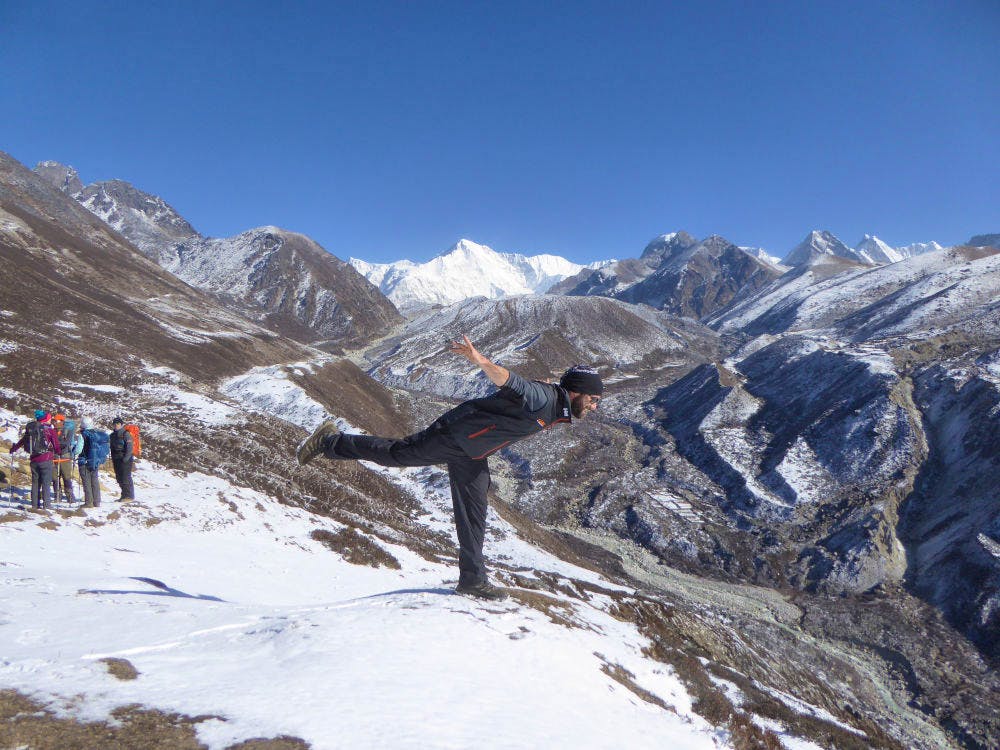

Latest Deals
4. Duration and Daily Distances
Duration and daily distances will also affect your adventure.
Everest Base Camp treks are generally longer, often spanning 12 to 16 days. This allows for a more gradual acclimatisation process.
Kilimanjaro, in contrast, is shorter. Depending on the route, you can complete it in as few as 5 to 8 days. While this makes it a quicker adventure, it also means you’ll gain altitude faster. This rapid ascent requires careful attention to acclimatisation to ensure you’re not hit by altitude sickness.
So, if you enjoy taking your time, soaking in the scenery, and getting to know the lay of the land, Everest Base Camp is your trek. But Kilimanjaro is your mountain if you’re looking to conquer a peak in a shorter time frame and are prepared for the rapid altitude gain.
The Takeaway: Your choice between Everest Base Camp and Kilimanjaro could well come down to how much time you have and what kind of daily challenge you’re up for.
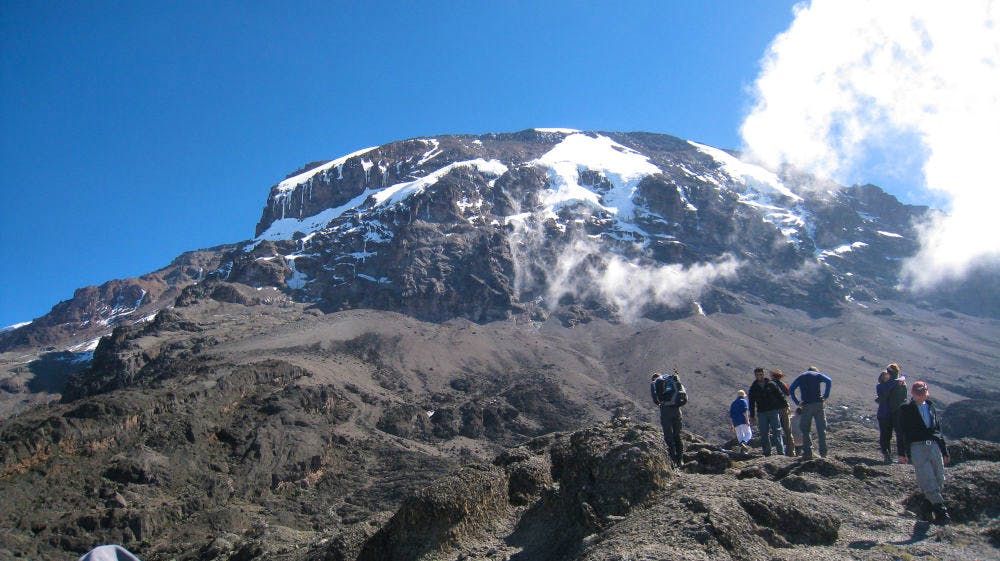
5. Success Rates
Success rates are a compelling metric to consider.
The Everest Base Camp success rate is generally higher compared to Kilimanjaro. This is mainly due to the trek’s longer duration, which allows for better acclimatisation and, consequently, a higher likelihood of reaching the base camp.
Kilimanjaro’s faster ascent and higher altitude make it a bit more challenging in terms of success rates. While many do reach the summit of Uhuru Peak, the rapid gain in altitude can be a stumbling block for some trekkers, leading to a lower overall success rate.
That said, success on either trek isn’t just about reaching the end point—it’s about the journey itself. Both treks offer incredible experiences, from the cultural richness of Nepal to the stunning vistas of Tanzania.
The Takeaway: Remember that the real success lies in the adventure and what you take from it.
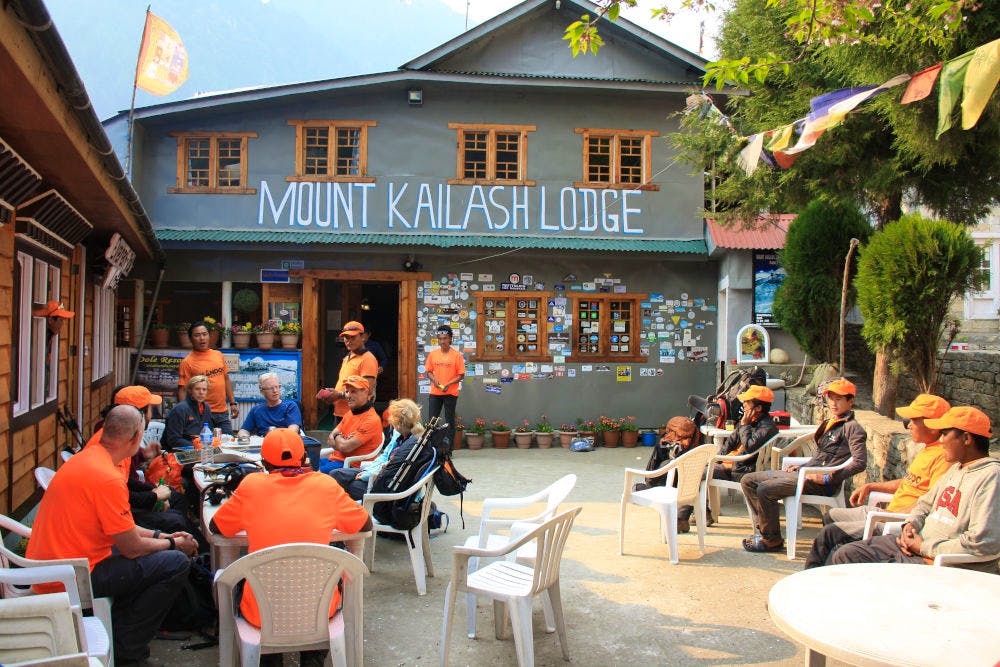
6. Altitude and Acclimatisation
Altitude and acclimatisation are critical players on the field.
Everest Base Camp takes you up to an altitude of 5,364 meters (17,598 feet). On the other hand, Kilimanjaro reaches a dizzying 5,895 meters (19,341 feet) at its summit, Uhuru Peak.
Now, let’s talk about acclimatisation. Acclimatisation is crucial for minimising the risk of altitude sickness, which can be a game-changer on both treks.
Everest Base Camp offers a more gradual ascent, with rest days built into the itinerary for acclimatisation. You’ll spend time in villages like Namche Bazaar, allowing your body to adjust to the thinning air.
Kilimanjaro’s rapid ascent means you must be extra vigilant about acclimatisation. While some routes offer an “acclimatisation day,” the quicker pace of the trek means you’ll have less time to adapt to the higher altitudes.
The Takeaway: If you’re concerned about altitude sickness or prefer a more gradual ascent, Everest Base Camp might be more your speed. Kilimanjaro could be your peak of choice if you’re up for the challenge of a rapid ascent and are confident in your ability to acclimatise quickly.
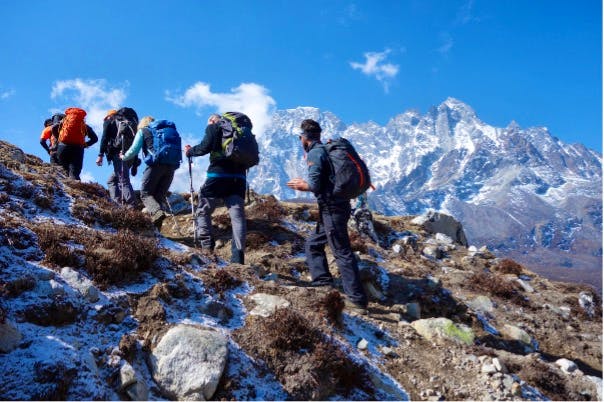
7. Accommodations and Amenities
When it comes to where you’ll lay your head at night, the Everest Base Camp vs Kilimanjaro debate offers two distinct experiences.
On the Everest Base Camp trek, you’ll usually find yourself in tea houses - cosy, family-run establishments that offer basic amenities like beds, meals, and sometimes even Wi-Fi. It’s a bit like staying at a rustic mountain refuge in Switzerland, where you can sip hot tea and chat with fellow trekkers after a long day’s hike.
Kilimanjaro, on the other hand, offers a more “back-to-nature” experience with tented camps. These camps are set up at designated sites along the route, and you’ll be sleeping in tents under the African sky.
Both types of accommodations have their charm.
Teahouses offer a glimpse into Nepali culture and a chance to socialise, while tented camps on Kilimanjaro bring you closer to the natural world and offer a sense of adventure.
The Takeaway: Consider what type of accommodation experience you’re looking for. Do you want the homey comfort of a teahouse, or are you craving the adventure of a tented camp?
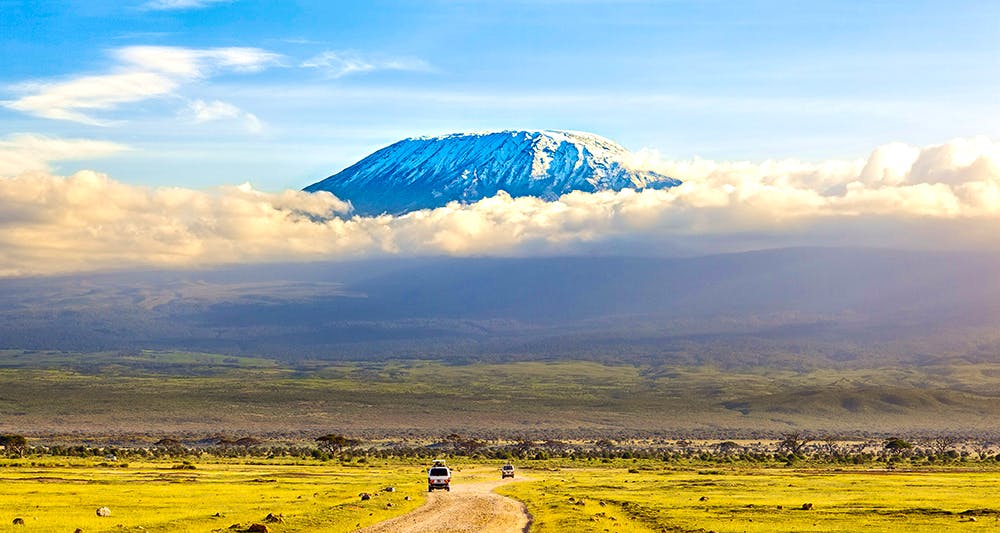
8. Best Time to Go
Timing is everything, especially when choosing between Everest Base Camp and Kilimanjaro.
The best time to hike to Everest Base Camp is pre-monsoon (March to May) or post-monsoon (late September to December). These windows offer the most stable weather conditions, maximising your chances of clear skies and a spectacular view of Mt Everest from Everest Base Camp.
Kilimanjaro is a bit more flexible when it comes to timing. You can climb the mountain year-round, but the most popular times are January to March and June to October.
These months offer the driest conditions, making the trek less slippery and more enjoyable.
The Takeaway: Think about what kind of weather you’re comfortable with and how flexible your schedule is. Both treks offer incredible experiences, but choosing the right time can make your adventure more memorable.
Conclusion
Ultimately, choosing between an Everest Base Camp trek or a Kilimanjaro adventure comes down to what you’re looking for in an epic journey. Whether it’s the cultural richness of Nepal, the quick but intense climb of Kilimanjaro, or the challenge you’re up for, both treks offer unforgettable experiences.
More EBC Articles
More Kilimanjaro Articles
Popular EBC and Kilimanjaro Trips
Find your next adventure
Why Skyhook?
Join over 27,000 Skyhook adventurers who've used our platform to book directly with our vetted local guides, at local prices (we never markup).
Expert Local Guides
Experienced local guides, handpicked by us.
Best Prices
Never pay a markup on the local guide's price.
Exclusive Club
Earn loyalty rewards every time you travel.
Great Social Vibes
Small group tours provide a richer experience.
Stellar Feedback
Over 2,800 reviews, average of 4.9/5 stars.












